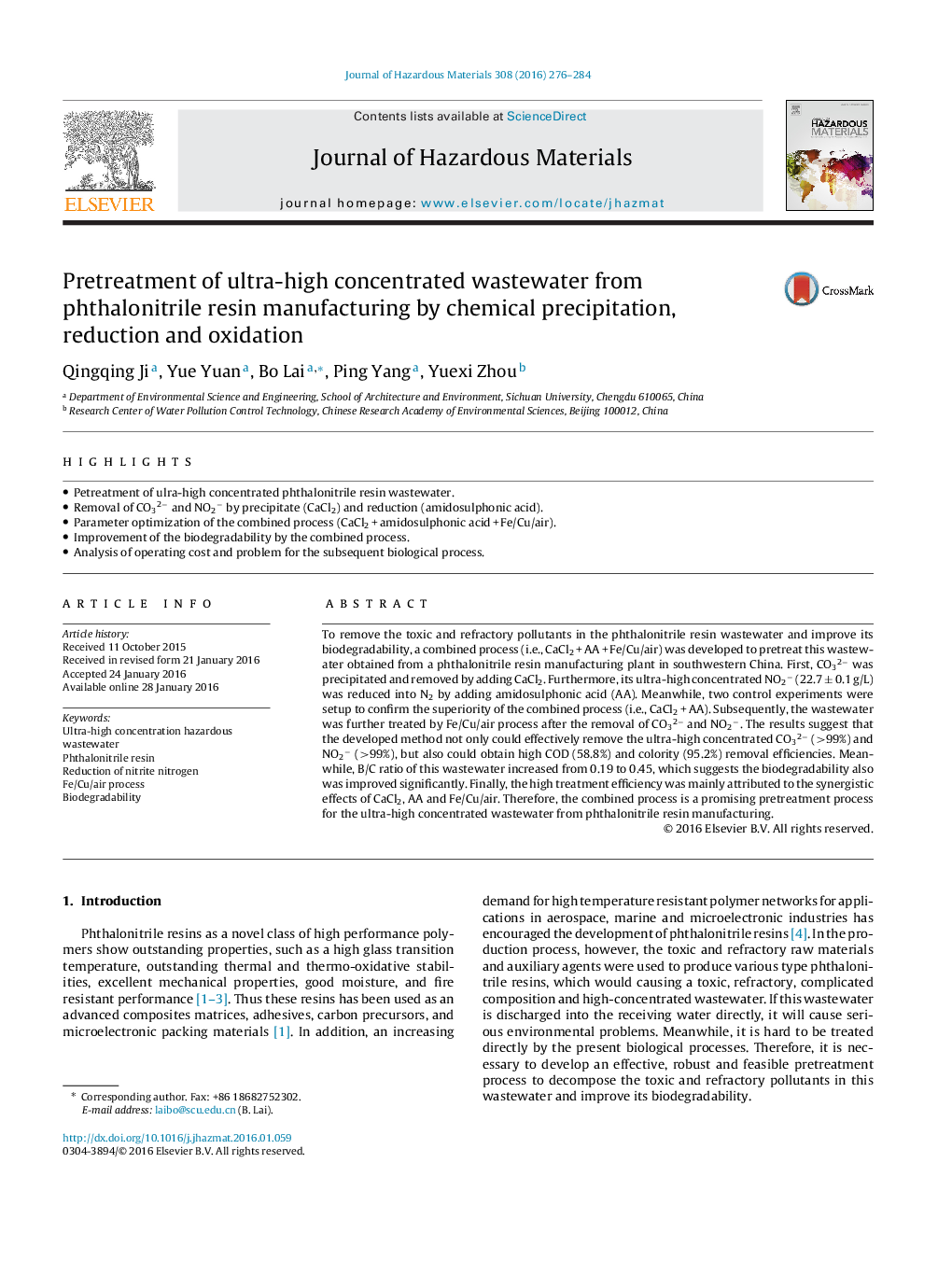| Article ID | Journal | Published Year | Pages | File Type |
|---|---|---|---|---|
| 575434 | Journal of Hazardous Materials | 2016 | 9 Pages |
Abstract
To remove the toxic and refractory pollutants in the phthalonitrile resin wastewater and improve its biodegradability, a combined process (i.e., CaCl2 + AA + Fe/Cu/air) was developed to pretreat this wastewater obtained from a phthalonitrile resin manufacturing plant in southwestern China. First, CO32â was precipitated and removed by adding CaCl2. Furthermore, its ultra-high concentrated NO2â (22.7 ± 0.1 g/L) was reduced into N2 by adding amidosulphonic acid (AA). Meanwhile, two control experiments were setup to confirm the superiority of the combined process (i.e., CaCl2 + AA). Subsequently, the wastewater was further treated by Fe/Cu/air process after the removal of CO32â and NO2â. The results suggest that the developed method not only could effectively remove the ultra-high concentrated CO32â (ï¼99%) and NO2â (ï¼99%), but also could obtain high COD (58.8%) and colority (95.2%) removal efficiencies. Meanwhile, B/C ratio of this wastewater increased from 0.19 to 0.45, which suggests the biodegradability also was improved significantly. Finally, the high treatment efficiency was mainly attributed to the synergistic effects of CaCl2, AA and Fe/Cu/air. Therefore, the combined process is a promising pretreatment process for the ultra-high concentrated wastewater from phthalonitrile resin manufacturing.
Keywords
Related Topics
Physical Sciences and Engineering
Chemical Engineering
Chemical Health and Safety
Authors
Qingqing Ji, Yue Yuan, Bo Lai, Ping Yang, Yuexi Zhou,
